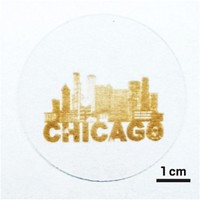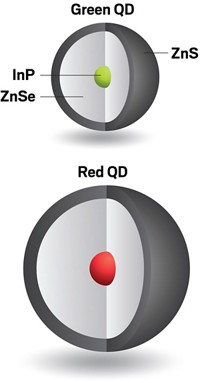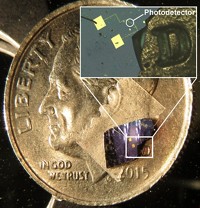Advertisement
Grab your lab coat. Let's get started
Welcome!
Welcome!
Create an account below to get 6 C&EN articles per month, receive newsletters and more - all free.
It seems this is your first time logging in online. Please enter the following information to continue.
As an ACS member you automatically get access to this site. All we need is few more details to create your reading experience.
Not you? Sign in with a different account.
Not you? Sign in with a different account.
ERROR 1
ERROR 1
ERROR 2
ERROR 2
ERROR 2
ERROR 2
ERROR 2
Password and Confirm password must match.
If you have an ACS member number, please enter it here so we can link this account to your membership. (optional)
ERROR 2
ACS values your privacy. By submitting your information, you are gaining access to C&EN and subscribing to our weekly newsletter. We use the information you provide to make your reading experience better, and we will never sell your data to third party members.
Synthetic Biology
LEDs Made From Silicon Quantum Dots Shine In New Colors
Nanotechnology: Researchers extend color range for the silicon devices, which could serve as an alternative to light-emitting diodes based on toxic metals
by Prachi Patel
January 28, 2013

Light-emitting diodes based on quantum dots could lead to energy-efficient computer and television displays with vivid colors. One team now reports new colors of LEDs made from silicon quantum dots (Nano Lett., DOI: 10.1021/nl3038689). The silicon LEDs, with colors ranging from deep red to yellow-green, could be an alternative to quantum dot LEDs that use toxic metals, the researchers say.

Some prototype flat-panel displays already use quantum dot LEDs. Quantum dots, which are semiconducting inorganic nanocrystals, have unique electronic properties that make them ideal for LEDs, scientists think. By changing the size of the quantum dots, researchers can tune the light that the materials emit. Unlike other light-emitting materials, each size of quantum dot emits over a very narrow range of wavelengths, which could allow engineers to make LEDs with pure colors. And because quantum dots can be made in solution, manufacturers could ink-jet-print devices on flexible panels, leading to bendable displays.
Currently, scientists make quantum dot LEDs from nanocrystals containing toxic heavy metals such as cadmium. To avoid these toxic elements and their negative impact on the environment, some scientists, including Uli Lemmer at Karlsruhe Institute of Technology, in Germany, and Geoffrey A. Ozin at the University of Toronto, have turned to silicon. “Silicon is abundant, low cost, and stable,” says Ozin. “Biomedical studies show that of all known nanomaterials, it is the least toxic.”
But scientists have struggled making silicon-based quantum dot LEDs that emit colors across the visible spectrum, specifically colors from yellow to blue. That’s because researchers previously haven’t controlled the sizes of the silicon quantum dots in their devices, Ozin and Lemmer report. So far, the reported devices have used ensembles of quantum dots with various diameters up to 5 nm. As a result, most reported silicon quantum dot LEDs emit only red and near-infrared light.
To control the size of silicon quantum dots in their LEDs, Ozin, Lemmer, and their colleagues separated the dots by size using ultracentrifugation, a technique commonly used to isolate biomolecules. After synthesizing silicon quantum dots through a previously reported method, the team spun a solution of the 1- to 3-nm-diameter nanocrystals in a high-speed centrifuge. The spinning separated the quantum dots into 30 groups; within each group, particles had the same size.
The researchers then took crystals of the same size and fabricated LEDs using a standard procedure that involved sandwiching a layer of quantum dots between electrodes made from indium tin oxide and aluminum. The wavelength of light emitted by the LEDs increased with the size of the quantum dots, shifting from yellow to red. For instance, LEDs with 1.3-nm-diameter particles glowed yellow, while devices with 1.8-nm-diameter crystals glowed red. Compared to previously reported silicon quantum dot LEDs, these devices have relatively low efficiencies at converting electricity to light. But the researchers say they have yet to optimize the devices.
Russell J. Holmes, who has developed silicon quantum dot LEDs at the University of Minnesota, thinks the study is important because it moves the field closer to realizing full-color light-emitting devices using silicon. He says sorting quantum dots by size could be crucial if silicon quantum dot LEDs are to gain widespread application. Although the efficiencies of the reported devices are low, he thinks the researchers could use nanocrystal and device engineering to improve them.
Holmes says the ultimate challenge for scientists working on silicon quantum dot LEDs will be producing green- and blue-emitting devices. These LEDs will require small nanocrystals, which may be more difficult to synthesize and integrate into devices.





Join the conversation
Contact the reporter
Submit a Letter to the Editor for publication
Engage with us on Twitter